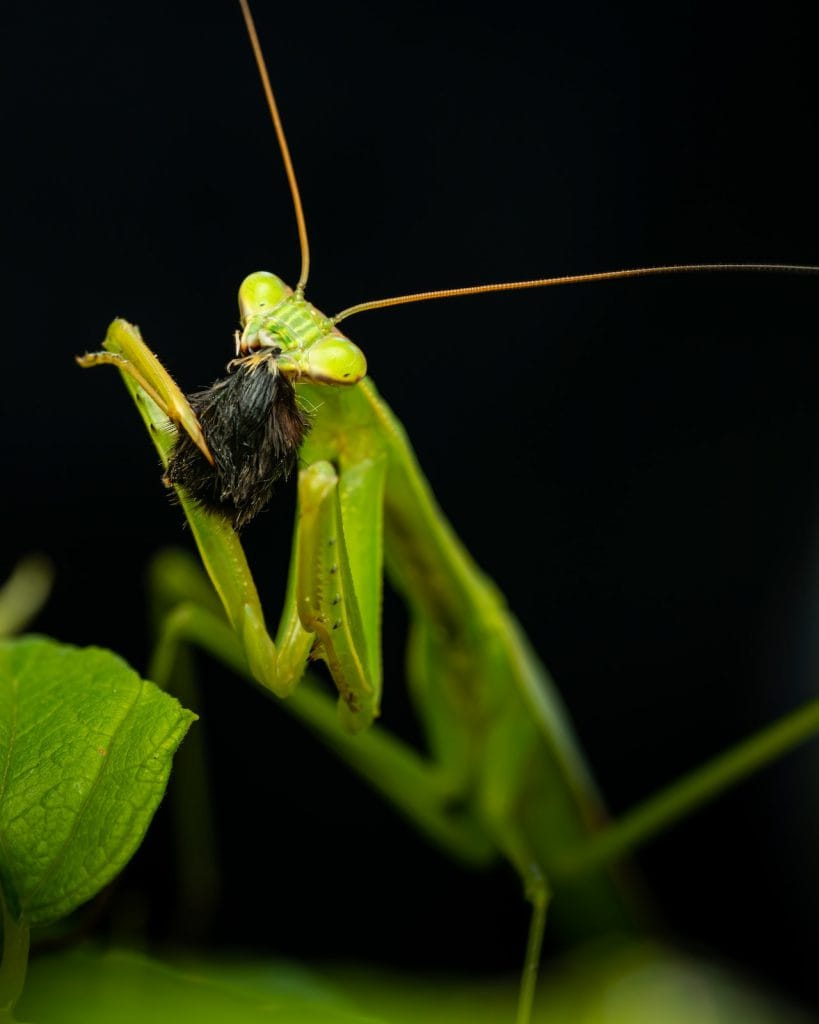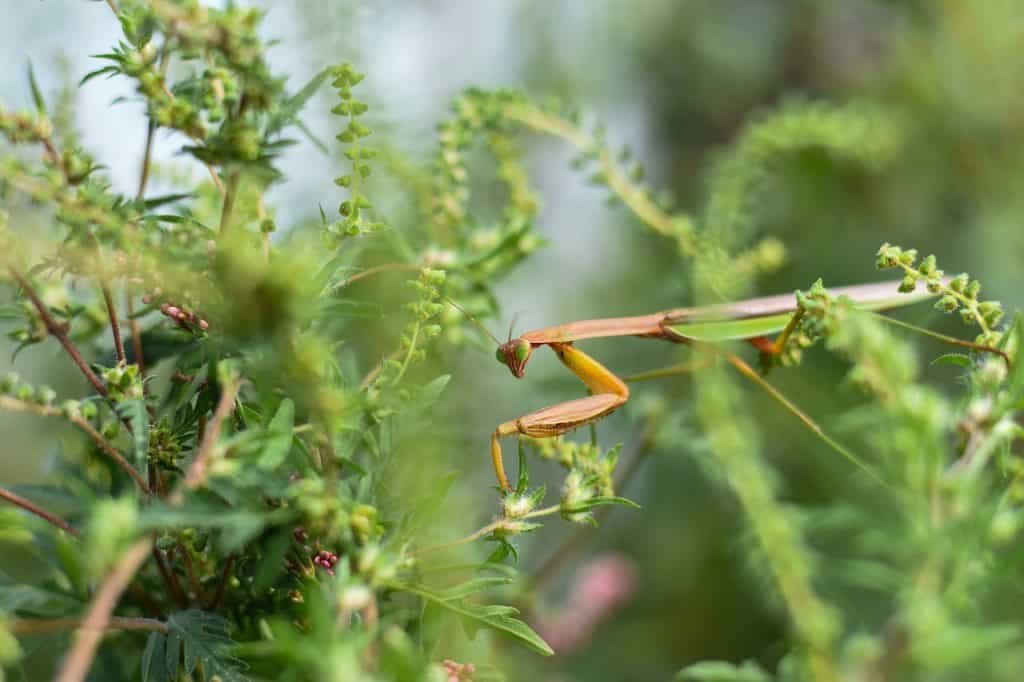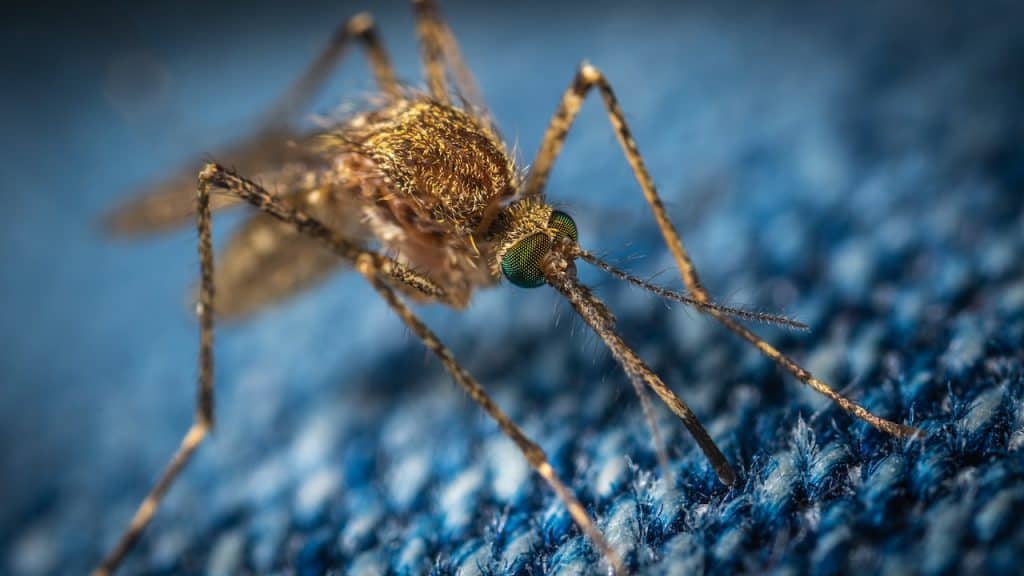Welcome to the fascinating world of praying mantises, where these incredible insects serve as not only a captivating addition to your garden but also as natural pest controllers. If you’re looking to invite these remarkable creatures into your outdoor space, you’ve come to the right place. In this article, we will guide you on how to attract a praying mantis and create a mantis-friendly habitat that encourages their presence. After reading this article you will know how to attract a praying mantis to your garden!

The benefits of attracting mantises to your garden
These fascinating insects serve as valuable allies in maintaining a thriving and balanced ecosystem. By creating a mantis-friendly environment, you not only invite natural pest control but also enhance the overall health and aesthetics of your garden. Get ready to discover the top benefits of attracting mantises and embrace the wonders they bring to your outdoor space.
- Natural Pest Control: Praying mantises are formidable predators that feast on a wide range of garden pests, including aphids, flies, beetles, and grasshoppers. By attracting mantises to your garden, you create a natural pest control system, reducing the need for harmful chemical pesticides and promoting a healthier ecosystem.
- Environmentally Friendly: Embracing mantises as your garden allies aligns with eco-friendly practices. By minimizing the use of chemical pesticides, you contribute to a more sustainable environment, preserving the balance of beneficial insects and minimizing the impact on beneficial pollinators like bees and butterflies.
- Fascinating Garden Companions: Watching mantises in action is a captivating experience. Their unique hunting techniques, lightning-fast reflexes, and graceful movements add intrigue and charm to your garden. Observing these stealthy predators can provide endless entertainment and a deeper connection with the natural world.
- Educational Opportunities: Attracting mantises to your garden offers educational opportunities for both children and adults. By observing their behavior, life cycle, and interactions with other insects, you can gain insights into the intricate web of nature and foster a greater appreciation for the delicate balance of ecosystems.
- Aesthetically Pleasing: Praying mantises are visually striking creatures that add a touch of elegance to your garden. Their elongated bodies, triangular heads, and remarkable camouflage make them a unique and beautiful addition to any outdoor space. The presence of mantises can enhance the aesthetics of your garden, elevating its appeal and creating a sense of harmony with nature.
Now, let’s take a deeper dive into how praying mantises can truly make a difference in your garden! By exploring the specific benefits mentioned earlier, we’ll unravel the fascinating ways in which these remarkable insects contribute to a thriving ecosystem.

Praying mantis is a natural pest control
The biggest benefit of attracting praying mantis to your garden is that they are nature’s skilled pest controllers. They play a vital role in maintaining a balanced ecosystem. These fascinating insects have a voracious appetite for a wide range of garden pests, making them an invaluable ally in your quest for pest control without relying on harmful chemicals. Here are some common garden pests that praying mantises happily devour:
- Aphids
- Flies
- Mosquitoes
- Moths
- Crickets
- Caterpillars
- Whiteflies
- Snakes (yeah, the can event hunt snakes)
- Mices
Invite mantises to your garden and let them take care of these troublesome pests naturally. Embrace the power of mantis predation and enjoy a healthier and thriving garden environment.

How to attract a praying mantis to your garden?
To attract a praying mantis to your garden, there are several steps you can take to create an inviting habitat. First and foremost, provide suitable vegetation by planting a diverse range of native plants, flowers, and shrubs. This not only offers ample hiding places for mantises but also attracts a variety of insects that serve as their prey. Several plants are known to attract praying mantises to your garden. Here are some examples:
- Lantana
- Dill
- Fennel
- Cosmos
- Goldenrod
- Marigold
- Coneflowers (Echinacea)
By incorporating these plants into your garden, you can create an environment that entices mantises to take up residence, offering them a rich food source and enhancing the overall biodiversity of your outdoor space.
Avoid using chemical pesticides in your garden, as these can harm mantises and disrupt the delicate balance of the ecosystem. Instead, opt for organic pest control methods to create a healthier environment for both mantises and other beneficial insects.
Utilizing mantis egg cases
You can attract praying mantises to your garden and support their population by utilizing their oothecas, also known as egg cases. These unique structures serve as a gateway to welcoming these fascinating insects into your outdoor space. To begin, explore areas where you know mantises reside, such as shrubs, trees, or vegetation near your garden. Keep a watchful eye for mantis oothecas, which appear as frothy, foam-like masses attached to branches or stems. Best time to look for them is late autumn, when female mantises lay thier eggs.
Once you’ve located an ootheca, carefully move it to your garden, ensuring you handle it with gentle care. The best option is to take it with a twig, plant stem or anything it is attached to, without touching ootheca by hand. Find a suitable spot where it will be as safe as possible. You can check if praying mantis eggs are fertile. Then, patiently await the hatching of the eggs within the ootheca, as a new generation of mantises emerges. This captivating process allows you to witness the miracle of life unfold in your very own garden.

Cons of having praying mantis in your garden
While praying mantises are beneficial insects for pest control, there are a few cons to consider when having them in your garden:
- Cannibalism: Praying mantises are known for their cannibalistic behavior, especially when food sources are limited. This means that mantises may prey on each other, including their own offspring. If you have a small garden or limited prey insects, it’s possible that mantis populations could self-regulate through cannibalism.
- Non-selective predation: While mantises primarily target pests, they are not entirely selective in their prey. They may also capture and consume beneficial insects like ladybugs, bees, butterflies, and other pollinators. This can inadvertently impact the overall biodiversity and ecological balance of your garden.
- Possible interaction with your other pets: You need to consider that mantises can interact with your other pets. Be careful if you have small birds, as mantises can even attack hummingbirds! You also need to be cautious to prevent your dog from eating a mantis. If you keep other insects or spiders, make sure they do not come into close proximity with the mantises.
- Short lifespan: Praying mantises have relatively short lifespans, typically ranging from six months to a year. This means that their pest control benefits may be limited to a specific period. If you rely solely on mantises for pest management, you may need to implement other strategies once their lifespan ends.
Conclusion
Are you ready to unlock the benefits of attracting praying mantises to your garden? By creating a mantis-friendly habitat and following the steps outlined in this article, you can invite these incredible creatures into your outdoor space. Embrace the wonders of natural pest control, eco-friendly practices, and a deeper connection with the intricate web of nature. While considering factors like cannibalism, non-selective predation, and their relatively short lifespan, the advantages of attracting mantises far outweigh the potential drawbacks. So, how to attract praying mantis to your garden? Follow the guidance provided and prepare to witness the remarkable impact these creatures have on your flourishing outdoor haven.
If you found this article interesting, don’t hesitate to share it on social media!
May interest you
The Surprising Benefits of Praying Mantis in Garden
Do Praying Mantis Eat Ladybugs, Bees, and Other Beneficial Insects?
Tiny Titans: How Much Can a Praying Mantis Lift?
Are praying mantis poisonous?
One prevalent question that surrounds these enigmatic insects is “are praying mantis poisonous?”. In this article, we will delve into the world of praying mantises to uncover the facts behind…